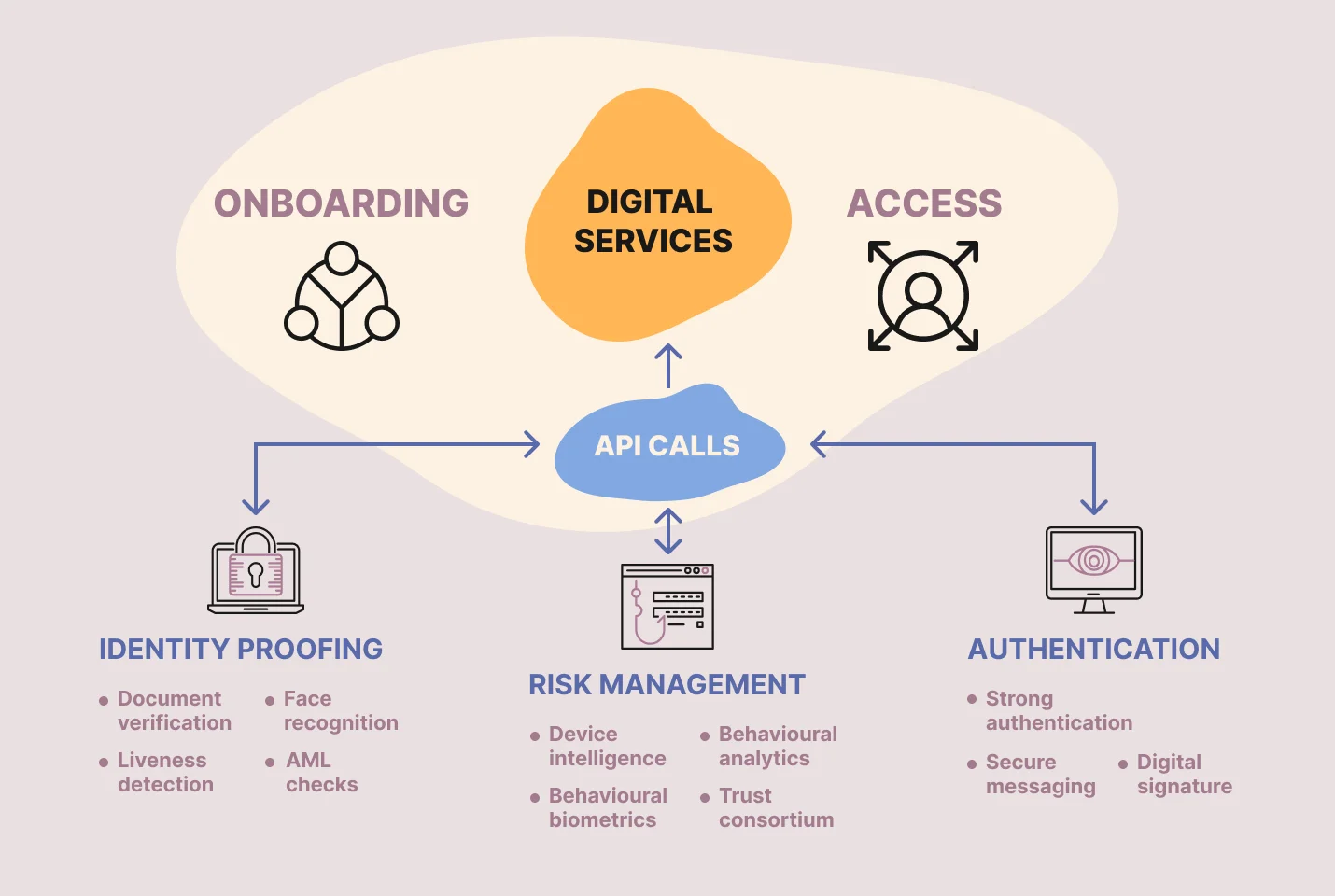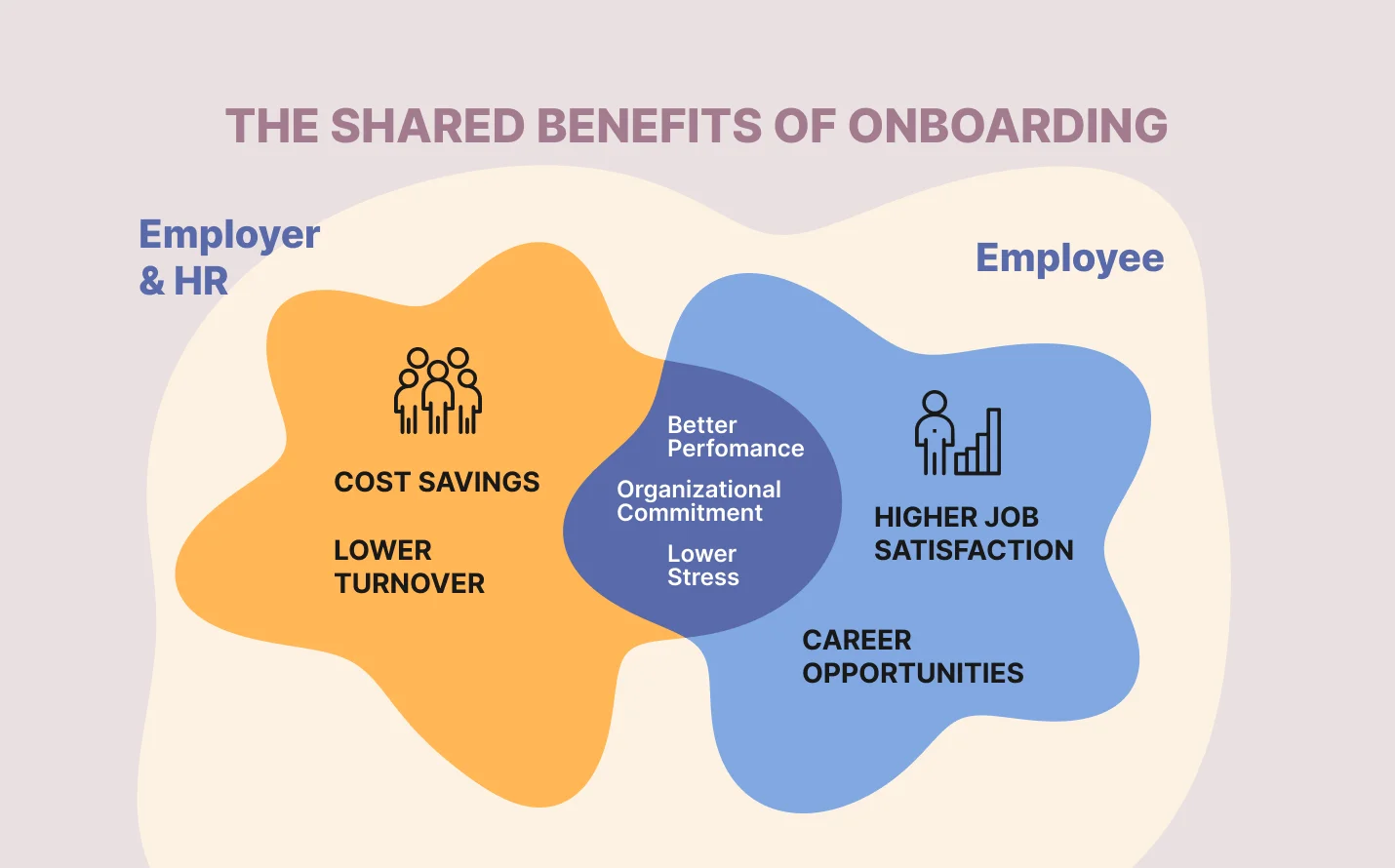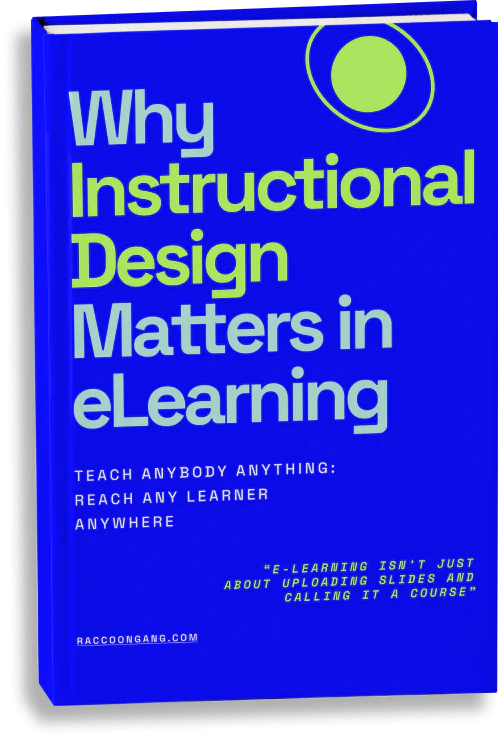Our experts have pulled together this guide to answer that question. Here, you’ll learn about onboarding best practices you can deploy quickly with your LMS and HR tools. You will also get insights into the benefits of a preboarding checklist, a practical buddy program, a first-day plan, and 30/60/90-day milestones you can track and review with managers. We’ll show where to automate and where to personalize, how to align training content with role expectations, and which KPIs matter for executive dashboards. By the end, you’ll have a scalable onboarding process that improves time-to-productivity and retention, so stay tuned.
Top 9 Onboarding Best Practices
It’s surprising to see that 36% of companies still haven’t set up a clear onboarding process. That’s right — over a third of businesses are passing up a significant opportunity to lay the framework for long-term employee success. Nevertheless, only 12% of employees believe their company does a good job of onboarding new staff.
Furthermore, given the importance of onboarding to long-term retention and the overall health of your staff, prioritizing onboarding best practices implementation in your program is nothing short of critical. We’ll discuss these practices in this detailed guide, answering significant concerns and providing invaluable insights to guarantee your onboarding process is structured and highly productive.
1. Engage and Preboard New Hires
In 2025, preboarding starts the moment the offer is signed. You set the tone, reduce first-week noise, and let automation handle the busywork across HRIS, LMS, MDM, and SSO. Keep it manager-led, but make the workflow automatic. That’s how you speed up time-to-productivity without burning cycles.
Start with role-based prep. Share a short welcome video from the manager, a first-day plan, and access to the LMS for two or three “getting started” modules. Then invite the new hire to a private Slack/Teams channel with their buddy and manager. They can ask questions, review FAQs, and see their first-week schedule—no guesswork.
Next, coordinate HR, IT, and Security. Ship the laptop early, enforce MFA, and test SSO before day one. Provision tools by role so they can log in and start training in minutes, not hours. This is one of the simplest onboarding best practices that pays off immediately.
Finally, make it two-way. Ask the new hire to confirm equipment receipt, complete preboarding tasks, and meet their buddy for a 15-minute intro call. Your onboarding process should feel clear and consistent, but never rigid. When managers lead and automation runs in the background, new hires arrive confident and ready to learn.
We summed all this up and compiled a mini checklist you can easily follow:
- Ship equipment & provision accounts — Send the laptop 5–7 days before day one and enroll it in MDM with SSO/MFA on. Preinstall core tools and LMS access, then confirm delivery and first sign-in.
- Send welcome note + first-week schedule — Ask the manager to send a short note and calendar invites for week one. Include the first-day plan, links to required LMS modules, and one clear support contact.
- Assign buddy before day one — Pick a peer in the same function and brief them on expectations. Book a 15-minute intro before day one and quick daily check-ins during week one.
Preboarding doesn’t have to be limited to administrative tasks. Consider providing new hires access to introductory training materials, company culture guides, or recommended reading to help them acclimate to your organization’s values and expectations. This proactive approach to learning sets the stage for a continuous development and growth culture, reinforcing that learning is a cornerstone of your workplace.
2. Paperwork and Administrative Tasks
Get the Paperwork Done ASAP
In 2025, paperwork is a preboarding task, not a day-one distraction. Move it into your HRIS/LMS workflow with e-signature and identity checks so new hires start learning and meeting people on day one. This simple shift signals a disciplined onboarding process and frees managers to coach.
Build automation into your digital onboarding best practices. Let the HRIS create tasks, set due dates, send reminders, and flag blockers—while IT auto-provisions access behind the scenes. Managers see a single dashboard, not ten email threads.
Collect and sign before day one
- Employment contract and NDA (e-sign).
- Tax/payroll and bank details (country-specific forms).
- Policy acknowledgments: code of conduct, security, privacy.
- Equipment receipt/acceptable-use and health-safety forms.
Auto-assign tasks with due dates
- HR: verify right-to-work/ID; confirm payroll setup.
- IT: create SSO/MFA, MDM enrollment, app licenses; test login.
- Manager: publish first-week schedule and goals; approve buddy.
- Buddy: send welcome note; book 15-min intro.
Reminders and escalations
- Automated nudges at 48h and 24h before deadlines.
- If a task misses SLA, escalate to the manager and HR in one message.
- Highlight “cannot start” blockers (no laptop, no SSO) at the top of the dashboard.
Tie the paperwork to learning
- Auto-enroll required LMS modules (security, compliance, tools).
- Due by the end of week one with reminders and completion tracking for audit.
This approach keeps admin tight, reduces first-day stress, and gets people into meaningful work faster.
3. Introduce Company Values and Culture
Introduce and Demonstrate Company Values as Early as Possible
Your organization’s culture is built on its ideals. Share these concepts with new hires from the beginning and demonstrate how you apply them in daily operations. It helps employees understand and support the company’s objectives and vision. Urge new hires to connect actively with these principles by giving tales or examples of how the values have benefited the firm and its employees, generating a compelling story that resonates with them.
Stay True to Your Culture
Consistency is vital when it comes to company culture. Ensure that your activities, rules, and choices are compatible with your stated principles. Authenticity builds trust and a sense of belonging among new employees. Consider recognizing and honoring individuals who reflect these ideals in their daily work to perpetuate the culture. It acknowledges their efforts and serves as a tangible reminder of the company’s commitment to its core values.
Share Your Definition of Success
Clearly define what success looks like in your organization. It helps new employees understand their goals and expectations, allowing them to succeed from the outset. Beyond defining success, offer direction on how to reach it, whether through job advancement, skill development, or meeting specified performance benchmarks. You drive new hires to strive for excellence and contribute meaningfully to your company’s goals by aligning individual achievement with organizational success.
4. Provide Orientation and Resources
Give Out a Welcome Package
Provide new hires with a welcome package that includes company swag, an employee handbook, and any other materials to help them feel prepared and part of the team. This package can also have a personalized welcome letter from the CEO or a senior leader expressing excitement about the new employee’s arrival. Such personalized touches go a long way in making new hires feel valued and appreciated.
Make the First Day Exciting
The first day on the job should be memorable. Plan an engaging orientation program that introduces new hires to their team, workplace, and essential facilities. Consider arranging a welcome breakfast or lunch with team members, providing an opportunity for casual introductions and camaraderie.
Avoid Overloading New Employees with Information
While it’s necessary to provide information, avoid overwhelming new hires with an information overload. Focus on what’s the most essential and allow them to absorb the rest gradually. Remember that the onboarding process is a journey, not a race. Encourage questions and create an environment where new hires feel comfortable seeking clarification or additional information as needed.
5. Foster Team Integration
Involve Team Members in the Process
Motivate team members to take an active role in onboarding. It could include things like introductions, team lunches, or social gatherings. Participation in a team fosters a sense of belonging and speeds up integration. It eases the transition and develops a friendly and collaborative work environment when existing team members take the initiative to welcome and engage new personnel.
Assign a Buddy
Assign a seasoned employee as a “buddy” or mentor to guide and support the new hire during their initial days. This mentorship helps newcomers feel more comfortable and helps them learn the ropes faster. It’s not just about getting acclimated to processes and procedures; having a buddy provides a trusted confidant who can offer guidance, answer questions, and share valuable insights about the company culture.
Provide Opportunities to Connect with Other Teammates
Facilitate opportunities for new hires to connect with their colleagues. It can include team-building activities, group projects, or even casual coffee breaks. Building relationships with peers is a vital aspect of automated employee onboarding, as it helps them feel socially integrated and makes a network of support beyond their immediate team.
Incorporate Job Shadowing
Allow new employees to shadow experienced colleagues to gain insights into their roles and responsibilities. Job shadowing helps bridge the gap between theory and practice. By observing real-life scenarios and onboarding best practices, new hires can better understand their job expectations and how their role fits into the broader organizational context. It’s a hands-on approach that accelerates the learning process and boosts confidence.
6. Learning Opportunities
Let Employees Learn in the Flow of Work
Foster a learning mindset by providing opportunities for ongoing education. Push learning into the tools people already use. Your LMS/LXP should surface role-based microlearning in Slack/Teams, trigger reminders after real tasks, and log completion to your HRIS. That keeps the onboarding process moving without extra meetings.
- Map each role to a skills profile and auto-assign playlists.
- Mix short videos, job aids, and sandbox labs tied to current tickets.
- Use AI search in the LMS to answer “how do I…?” moments on demand.
- Track time-to-first-deliverable, module completion, and manager feedback.
A learning culture where employees can gain new skills and knowledge while at work improves their professional development and adds to a more innovative and adaptable workforce.
Introduce Work Gradually
Avoid overwhelming new hires with a heavy workload at the outset. Gradually increase their responsibilities as they become more comfortable and confident in their roles.
- Week 1–2: observe, pair, and complete small, low-risk tasks.
- Weeks 3–6: own a small project with a defined exit criterion.
- Weeks 7–12: take on a standard workload with periodic coaching.
Start with shadowing and controlled tasks, then expand the scope as confidence grows. Use a 30/60/90 plan to protect quality while increasing velocity.
Day 30
- Role goals: complete shadowing; ship the first task or ticket.
- Training: security, tools 101, core SOPs (auto-assigned in LMS).
- Metrics: time-to-first-deliverable, module completion %, buddy check-ins.
Day 60
- Role goals: own a small project end-to-end; handle routine escalations.
- Training: intermediate workflows; product/industry basics.
- Metrics: quality rate, cycle time, manager readiness rating.
Day 90
- Role goals: manage a steady slate of work; contribute to team rituals.
- Training: advanced role skills; cross-functional handoffs.
- Metrics: OKR/goal contribution, CSAT/internal NPS (where relevant), retention risk signals.
This keeps learning practical, measurable, and embedded in daily work—exactly what a 2025-ready onboarding process should deliver.
7. Check-ins and Feedback
Check In Regularly
These can be daily, weekly, or monthly, according to the needs of the individual. Use these check-ins to answer inquiries, provide feedback, and provide assistance. Consistent communication makes new employees feel appreciated and ensures that any issues or challenges are handled as soon as possible, preventing them from escalating.
Conduct Frequent Check-ins with New Hires
Frequent check-ins aid in the early detection of problems and reflect your dedication to their achievement. Facilitate accessible communication during these meetings, creating a secure area for recruits to express themselves, seek clarification, or share their progress. These contacts can also contribute to a sense of belonging and the development of solid workplace connections.
Collect Feedback from New Hires
Comments are an important tool for optimizing the onboarding experience. Request feedback from new hires on how to improve the experience. You empower them to contribute to enhancing your onboarding program by actively seeking their thoughts. Moreover, this practice supports a culture of continual development and demonstrates your commitment to providing a great employee experience.
8. Involvement of Leadership
Involve Senior Leaders
Leadership involvement is crucial for setting the tone and reinforcing company values. Have senior leaders engage with new employees through welcome messages, meetings, or mentorship programs. Their presence and active participation send a powerful message about the organization’s commitment to the success and well-being of every employee. Additionally, senior leaders can share their insights, experiences, and strategic vision, helping new hires understand their role in contributing to the company’s long-term objectives. This connection between leadership and newcomers fosters a sense of alignment and inspires a shared commitment to the organization’s mission.
9. Flexibility and Adaptation
Be Flexible
Every new hire is unique, so be prepared to adapt your onboarding process as needed. Tailor the experience to accommodate individual preferences and learning styles. Flexibility also means being open to feedback from new employees and adjusting the onboarding journey based on their insights. This dynamic approach enhances the onboarding experience and showcases your organization’s commitment to valuing and embracing diversity.
Revisit Your Onboarding Process
Regularly review and update your onboarding process to ensure it remains effective and aligns with your evolving company culture and goals. Consider conducting surveys or focus groups with recent hires to gather their input on what worked well and what could be improved. You demonstrate a commitment to continuous improvement and a culture of excellence by keeping your onboarding process updated and responsive to changing demands.
Conclusion
Effective onboarding is vital to the employee lifecycle and influences retention, productivity, and overall job satisfaction. By engaging new hires early, sharing company values, providing the right resources, fostering team integration, and maintaining flexibility, you can create an onboarding experience that sets your employees up for success from day one.
FAQ
How does effective onboarding improve employee retention?
What role does technology play in modern onboarding?
How can onboarding impact long-term company success?
What are the key elements of a successful onboarding program?
What common mistakes should be avoided in onboarding?
How long should onboarding last?
What information should the new employee receive during onboarding?
- Top 9 Onboarding Best Practices
- 1. Engage and Preboard New Hires
- 2. Paperwork and Administrative Tasks
- 3. Introduce Company Values and Culture
- 4. Provide Orientation and Resources
- 5. Foster Team Integration
- 6. Learning Opportunities
- 7. Check-ins and Feedback
- 8. Involvement of Leadership
- 9. Flexibility and Adaptation
- Conclusion





